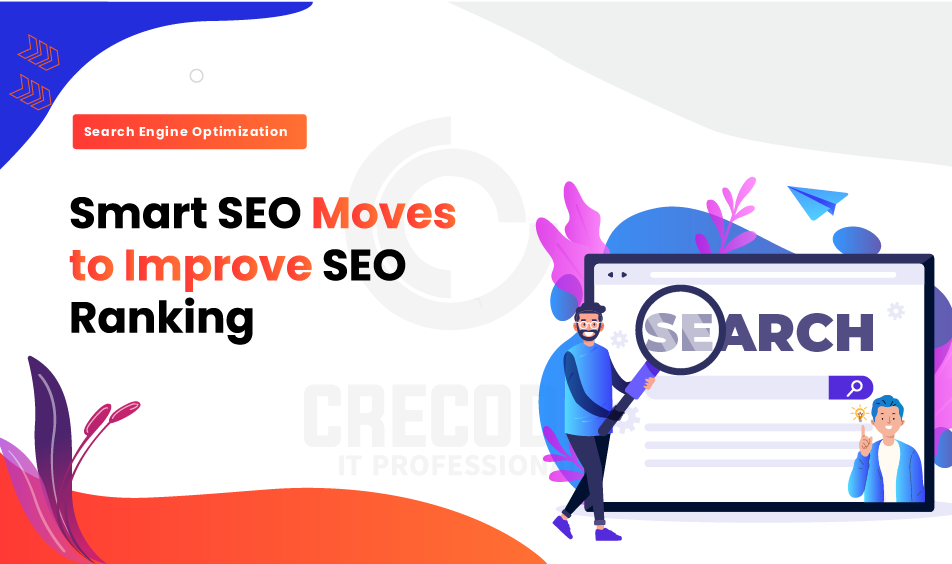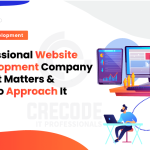A lot of people, including me, think the number of important ranking factors is much higher than 200. Each of these elements has a different weight on different search results pages.
This makes SEO incredibly complex and hard to explain. Some have referred to SEO as an art rather than a science. I won’t go into detail on these 200+ ranking factors.
The purpose of this article is to provide you with a fast introduction to how search engines work as well as a list of the most significant SEO moves to explore.
Search Engine Top Secret
Today, the majority of searches are encrypted. – This means you won’t be able to see what users type into the search bar to get to your website.
Today, the most reliable search data is available from a small number of SEO tool providers who purchase clickstream data from third-party brokers.
Simply put, the usage of ad blockers and VPNs also prevents data from being transferred between tiny site owners.
You can’t see how many people visit your site or what they’re looking for anymore.
Personalization
Now Individuals can receive highly tailored search results from Google based on their particular interests and web search history.
It also considers the device you were using, such as the brand of your phone, tablet, desktop computer, smart TV, and so on. Your activities are also scrutinised and, to some extent, influenced.

For instance, your usage history, which includes websites you visit, videos you like or share, apps you have installed on your smartphone, and other activities.
You will then be able to interact with the search results (the websites you clicked on, what you searched before, the ads you found, etc.). These combinations define the following Google search result. My top ten search results will differ greatly from yours.
Cross-Platform
Searches are conducted on a variety of devices, with varying objectives for search engines. For example, desktop searchers looking for “Aglio olio” are more likely to find recipes.
A mobile searcher, on the other hand, maybe seeking an Italian eatery. Even if you have an exact number for keyword search volume, estimating how much traffic you’ll receive is challenging.
SMART SEO in 2023?
Today’s largest issue for SEO specialists is implementation, not knowledge.
Breaking down modern SEO into two categories –
- There are a variety of technical issues involved, including website architecture, user experience optimization, internationalization, etc.
- Micro-level optimizations include focused content and on-page optimizations such as intent matching and content moderation.

The issue is that you can no longer create a consistent SEO procedure and apply it uniformly to all websites and pages.
- Every webpage is distinct.
- Every search intent is distinct.
Search Engine Optimization is no longer considered a stand-alone marketing “strategy.” It should, however, be incorporated into your site development and content generation procedures.
To rank high on Google and build your website, you must implement a continual improvement strategy that considers both macro and micro-level shots.
There are three areas in this action plan where your website must be regularly upgraded and optimized.
Create information that is both relevant and beneficial.
Create web pages and websites with a clear purpose for users. Keep these web pages up to date and valuable.
Finally, your website should supply readers with unique content that they won’t be able to find anywhere on the internet.
If you’re just starting, you’ll be spending a lot of time and money on content auditing.
Inquire about the following points about your website.
- Is your content up to date and well-presented?
- Is there enough depth (and value) in the information for the user?
- Is your material covering enough themes that people will find interesting?
- Is there Professionalism, Authority, and Credibility in the content?
Connect, but do so intelligently.
You regularly employ internal links to the main web page (without compromising the website user experience). Links to additional relevant and valuable Internet web pages.
Obtain links from other relevant websites and blogs. Links on the Internet are similar to voting in person. The only distinction is that various links have varying search ranking weights.
Links from the trustworthy website Nasa.com, for example, are more potent than links from a web directory from one page to 500 other websites.
The primary purpose of link building is to accumulate as many “excellent” links as possible.
Some strategies stimulate the creation of high-quality material that naturally draws links (people tend to link to content they find useful or interesting).
Others obtain links through financial transactions (sponsorship and advertising), high-quality content (guest articles), and commercial ties (networking).
Each of these tactics may or may not be effective. The goal here is to identify your strongest suit and then select a few appropriate link-building techniques.
Create an enticing title
Create a keyword-rich title that entices users to click on your website on search results pages.
In SEO, page titles have two purposes.
- To promote a web page on a search results page, assist search engines in understanding the content of the web page.
- The length of title tags is limited to 65 to 70 characters. Important keywords and fundamental value propositions should be placed at the start of each phrase.
Comply with the searcher's intent
Examine your target keywords in your SERP to see what Google thinks your search intent is. Change the page’s formatting and add new elements to meet your search intent.
“Search Intent” refers to the aim that a user wishes to attain when conducting an Internet search.
Traditionally, searchers tend to look for exactly what they are looking for, often very literally. So, the basic principle behind SEO is to match your site’s content to as many relevant keywords as possible in each search.
More is required in modern SEO. Not only must the content match the searcher’s query, but how the content is delivered also influences intent matching.
Examine the Top Ranks page for your chosen keyword to see what Google thinks is the objective of your search.
Change the page’s formatting and add new parts to better fit your search intent. The number of users that clicked on your site or stayed longer can be used to gauge its efficacy.
Enhance the User Experience (UX)
When creating web pages, put a priority on user experience. Run A/B testing on your website regularly to improve the customer experience.
Engaging consumers who visit your website necessitates more than simply drawing them. Your readers are your consumers, and making a good first impression is critical.
Having said that, it should offer security, a smooth browsing experience, and a pleasant stay.
Using an SSL certificate not only protects data when people connect to your site but also informs search engines that your site is safe to send traffic to.
Visitors who have to wait for a website to load frequently feel frustrated and leave.
Lastly, while advertising and pop-ups might be successful monetization tools, they can negatively impact users’ browsing experience.
Conclusion: SEO is a journey, not a destination.
Today, numerous businesses and individuals offer SEO services. Before hiring them, keep in mind that SEO is a journey, not a goal. Your SEO requirements alter as your website and content evolve.
The algorithms used by search engines are likewise continually updating. In other words, there is no such thing as a “perfect SEO solution.” Understanding, experimentation, and devotion are essential. In other words, it is a lifetime adventure.
Make your SEO journey a success by hiring Crecode. Contact now for a free consultation.


